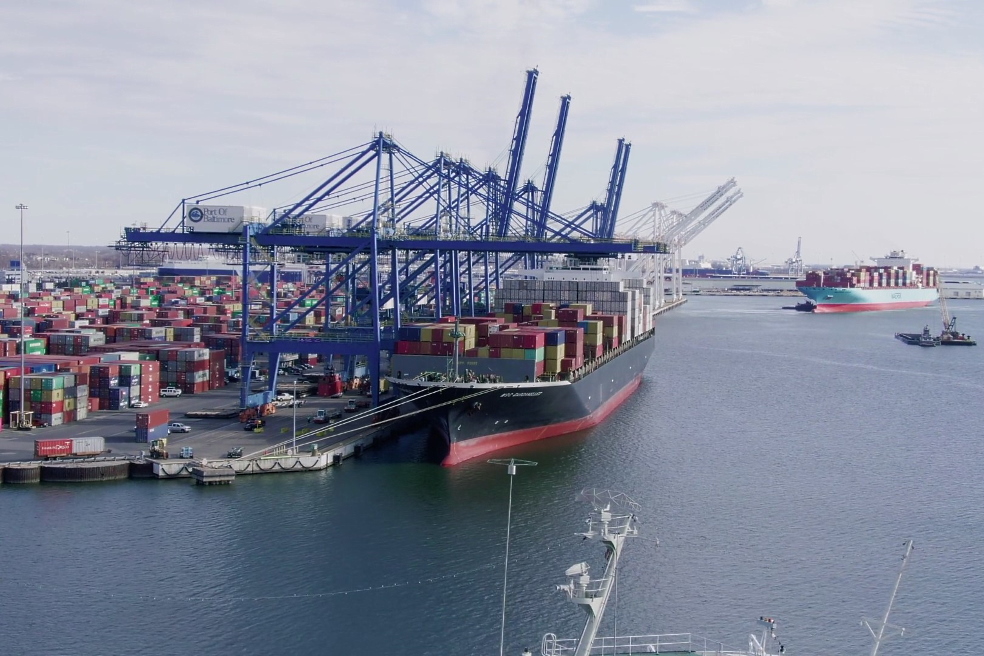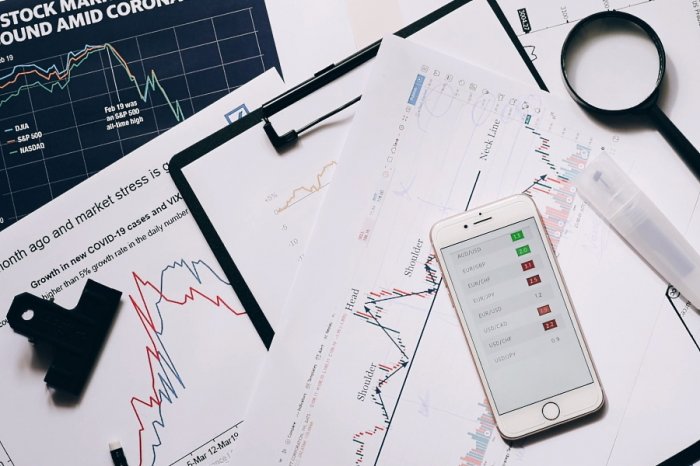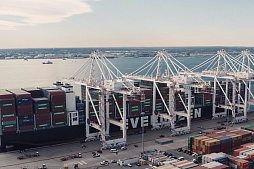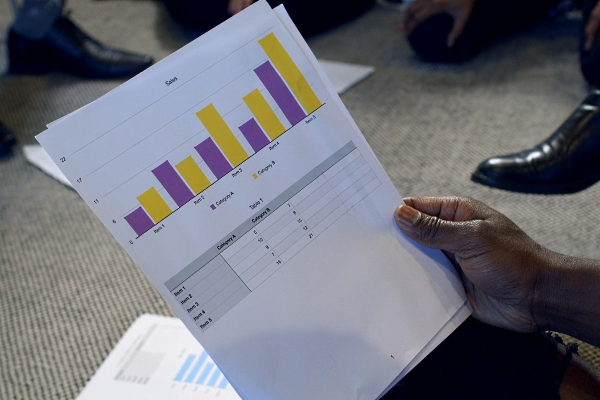To consider an application for financing, fill out the form and send it to us by e-mail along with the project brief, or contact our experts
Unfavorable market environment, crisis phenomena in the global economy, geopolitical tensions and other risks make adjustments to large projects, mainly making it difficult to attract external financial resources.
In order to obtain a large loan on adequate terms, decision makers must have a clear understanding of the criteria applied by financial institutions when issuing loans.
Proper application, taxation and control of debt obligations are also important, which ensures smooth loan servicing and continued cooperation with creditors for further business development.
Economic principles of business loans
The financial basis of any company is the equity capital, but the effective activity of the business is impossible without the constant attraction of borrowed funds.External resources make it possible to significantly expand the size of the company's economic activity, ensure a more efficient use of equity capital, accelerate the renewal of fixed assets and increase the market value of the business.
Borrowed capital refers to the funds that are raised to finance the business activities of the company from investment funds, banks, non-bank credit organizations and other financial institutions.
The structure of attracted capital includes short-term, medium-term and long-term liabilities, which are attracted on different terms depending on the financial needs of the business. Liabilities that are medium-term and long-term in nature are most often presented in practice in the form of loans.
Financial literature contains the following principles of business loan:
1. The loan should be considered as a specific type of economic relations based on trust between the parties to the loan agreement.
2. The economic basis of the loan is the mobilization and accumulation of temporarily free funds for the formation of debt capital from them.
3. The loan can be considered an act of transfer by the lender of a certain amount of capital to the borrower for temporary use on terms of repayment.
The term "loan" is mainly considered as the trust of one person to another, on the basis of which a certain resource is provided in a monetary or commodity form for temporary use for an adequate interest.
This interpretation of the concept of business loan follows from the Latin word "creditum", which means "to believe" or "to trust".
For three thousand years, since the formation of the first states in Ancient Babylon and Assyria, credit relations have been continuously developing and improving. As the economy developed, lending underwent significant changes.
The simplest form of lending, which originated in the early stages of the development of simple commodity production and exchange, was usury. This is an early form of business lending that was used by small producers at high interest rates, which often led to the complete ruin of entrepreneurs.
Historically, the first borrowers were small producers (peasants, artisans), as well as slave owners and feudal lords. On the other hand, merchants, monasteries, and churches were considered the main creditors of past centuries. Borrowers often applied for a loan for urgent consumer needs or debt payments (operating expenses), and high interest rates did not encourage the development of what we today call investment lending.
In addition to usury, commodity producers provided each other with loans when buying and selling goods.
If the buyer was temporarily unable to make a purchase at his own expense, and the seller was interested in selling his goods, then the sale could take place with a deferred payment against the corresponding debt obligations and guarantees.
In fact, the exchange of goods is the fertile soil where credit relations flourish. The formation of versatile and strong exchange relations of commodity exchange with their active service by banks has historically led to an increase in mutual dependence and trust between market entities.
Over time, business loans have become an important tool for financing large long-term projects aimed at business development, which led to the expansion of investment lending.

From a legal point of view, a financial loan refers to funds provided to a legal entity or individual for a specified period and at interest. Business lending is a financial service that, in most cases, can only be provided by financial institutions such as banks.
Any financial institution must be entered in the appropriate register in the manner prescribed by law.
A financial institution is a legal entity that provides financial services in accordance with the law. Financial institutions include banks, credit unions, leasing companies, trust companies, insurance companies, pension funds, investment funds and companies and other legal entities defined by national financial legislation.
Bank loans for large businesses
A business loan is one of the main types of operations carried out by any bank in the course of its financial activities.It is an agreement under which the bank lends resources to the borrower for a specific purpose and on agreed terms, and the borrower undertakes the obligation to use the loan in accordance with the agreement and repay it before the maturity date.
When it comes to bank loans for large businesses, the numbers can be impressive.
For example, in 2018, the media announced the largest-ever syndicated loan of $100 billion that Broadcom planned to use to acquire tech giant Qualcomm. Despite the difficult fate of this financial transaction, these figures give an idea of the real scale of risk and responsibility in today's corporate lending.
The previous record was held by a $75 billion business loan that was provided in 2015 for one of the largest deals in the brewing industry to acquire SAB Miller.
All the largest banks in the world, to one degree or another, are engaged in business lending, including issuing large loans to local and foreign companies. Among them are JPMorgan Chase, IDCBY, Bank of America, Credit Agricole SA, Wells Fargo, Citigroup and others.
An analysis of economic literature and current financial legislation allows us to identify the following features of a bank loan applicable to large business:
• Business loan refers to the main type of loan, according to which funds in cash or non-cash form are provided by banks to corporate clients for temporary use.
• The main source of loans for business is capital formed as a result of the accumulation of free funds and intended for its placement by the bank in order to make a profit.
• The principles of business lending by banks include repayment, special purpose and security, and non-compliance with key principles can lead to fines and termination of relations between the company and the bank.
• Business loans can be classified into domestic and international loans, and the importance of the latter group is steadily growing as business processes become global.
• Depending on the type of borrower and the purpose of using a business loan, some experts distinguish between production loans, investment loans, securities loans, loans to replenish operating capital and loans to fixed assets, import loans, and export loans.
• According to the principle of security, experts distinguish between secured loans and unsecured loans provided without collateral. The security of bank loans may be based on collateral, guarantees, credit risk insurance and other instruments.
• Depending on the repayment period, business loans can be short-term, medium-term and long-term. Investment loans are usually of a long-term nature.
• A loan agreement is a basis for credit relations, which defines the mutual obligations and responsibilities of both parties and can be changed unilaterally or without the consent of these parties in cases specified by law.
In the course of activities related to business lending, the bank risks not only its funds, but also borrowed funds.
Therefore, government usually establish strict rules for the lending activities of banks, controlling their observance throughout the entire period of the banking license.
Bank financing is one of the most suitable solutions when it comes to moving a business forward, either to launch, grow, or pay suppliers in difficult times.

The main advantages and disadvantages of loans as a source of financing for large businesses are listed in the table below.
| Advantages | Disadvantages |
| Immediate financing: the company can quickly get rid of debt, pay off contractors, purchase new equipment or goods for the business. | Need for loan collateral or payment guarantee: Typically, a bank will request liquid collateral (such as the assets of the financed project) or a guarantee from a third party in order to make a loan decision. |
| Large-scale financing: lending provides businesses with ample opportunities for the implementation of capital-intensive projects, especially when it comes to syndicated loans. | Additional fees: investment lending is a complex and time-consuming process, therefore, in addition to interest, there are fees associated with the loan, which increase its value. |
| Adapted to the needs of the business: the bank will realistically assess the financial situation of a potential borrower and, determine the terms of repayment and the interest rate. | Procedures and documents: the analysis of the borrowing company and its projects requires a lot of information, and this part of the process can sometimes take longer than expected. |
| Forecasting through periodic payments: the impact of investment loans on business is predictable, since management can plan cash flows for years ahead. |
Stages of obtaining a large business loan
The financing of large projects by banks and other financial institutions has a number of common features, requirements and typical stages that project initiators must go through before obtaining a loan.A business loan is always a complex and high-risk financial product that requires adequate preparation and analyzes to ensure the expected benefits for all parties to the agreement.
As we said above, loans for large businesses can reach fantastic sums of tens of billions of dollars.
This significantly increases the risks and complicates the contract structure, since large projects are often financed by banking consortiums of several financial institutions, each of which has its own interests in the project.
The process of obtaining a syndicated loan can be quite complicated, lengthy and expensive, primarily due to organizational difficulties.
A syndicated loan is a special type of long-term loan that is issued by two or more lenders. The term comes from the word “syndicate”, since the lender is a syndicate of financial institutions that have certain shares in the project, depending on their loan. Companies turn to these banking products only when the amount of requested finance exceeds a certain limit. At the moment, we are usually talking about business loans in the hundreds of millions of dollars or more.
Syndicated loans can be formed in two main ways:
• The applicant can independently choose other members of the syndicate, and is personally responsible for negotiating with banks, preparing and concluding a loan agreement, as well as setting key terms and conditions.
• The borrower cooperates with one bank, which assumes the function of a leading entity, organizes the search for co-lenders and takes on all the tasks related to preparing for the signing of the loan agreement. This option is more beneficial for the client, since all organizational issues fall on the financial institution. In addition, many large lenders cooperate with each other and have well-established communications.

In the simplest case, the borrower applies to a banking institution in the form of an application.
It is obligatory to indicate the required amount of the loan, its purposes, repayment periods and the form of collateral.
The bank sets the interest rate and the procedure for paying interest specified in the loan agreement. The factors influencing the interest rate are the level of risk, the availability of collateral, the situation in the credit market, the repayment period, the discount rate, etc.
In the event that a borrowing legal entity receives a loan to pay for equipment or goods under specific contracts, it submits to the bank copies of these contracts and agreements along with other documents indicating the source of the loan repayment.
When obtaining a loan to cover expenses that are not covered by income during the year, the borrower is required to provide forecast calculations of the need for a short-term loan for the corresponding period.
To apply for a business loan, the following package of documents is submitted to the bank:
1. Application for a business loan in the form prescribed by the bank.
2. Borrower’s questionnaire, the form of which is approved by the bank.
3. Copies of the constituent documents and licenses stipulated by law, notarized.
4. Business plan, feasibility studies necessary for obtaining a loan.
5. Copies of contracts, agreements, protocols of intent with sellers and buyers and other documents related to the loan (rental agreement, documents on land ownership).
6. Documents to secure the loan (land, real estate, other guarantees).
7. Documents related to insurance (insurance policy, insurance contract).
8. Financial statements for the last reporting year or six months.
This list is not complete and may be supplemented by other documents depending on the nature of the loan, type of client, amount, etc.
In particular, banks pay great attention to the issues of securing a loan, as well as the credit history of a potential borrower.
After providing the banking institution with all the necessary documents, the lending team calculates the criteria for the financial condition of the borrower. These indicators cover the long-term solvency, financial strength, profitability of the company and specific projects, as well as the borrower's cash flow system.
Expert conclusions made after the above calculations, with proposals, are submitted for consideration to the credit committee of the bank. The worse these coefficients are, the lower the class of the borrower and the greater the insurance reserves for such a loan, which means that such a business loan will become less acceptable for the bank.
On the other hand, the decision to issue a loan for a particular company or project depends on a lot of factors, such as the market situation, industry development forecasts, etc.
Some features of business loans taxation
According to the current tax practice, funds attracted by a taxpayer by obtaining loans, as well as the return of the principal amount of loans by a taxpayer, are not included in gross income and are not subject to taxation.The company's activities related to attracting loans and paying off debt provide certain tax advantages that can be used with great benefit for business.
With regard to interest paid to the lender, under modern income tax legislation, the borrower may include it in gross expenses. In accordance with these norms, gross expenses include any expenses related to the payment or accrual of interest on debt obligations (including any loans) during the reporting period, if such payments are made in connection with the taxpayer's business activities.
A deductible expense is an expense that is directly related to the economic activities of the company and therefore can be deducted from the tax base.

Financial legislation usually imposes the following requirements to deduct expenses from the tax base:
• Expenses are directly related to business activities.
• Expenses are properly documented (loan agreement).
• Expenses are correctly recorded in accounting records.
National tax authorities usually enforce these requirements strictly to avoid tax fraud.
This is why a company must always demonstrate that the expenses they want to deduct are related to its activities, which can be problematic in some cases. On the other hand, the taxation of loans does not cause any difficulties in this context.
Of course, the legislation of some countries provides for certain restrictions on the inclusion of interest on loans in the gross expenses of the reporting period.
For example, this may apply to companies, part of the authorized capital of which is owned or managed by non-residents. The inclusion of expenses for the payment of interest on debt obligations in favor of the above-mentioned persons as part of gross expenses may be allowed up to a certain limit.
Thus, in order to take full advantage of the tax benefits of a business loan, decision makers must be well aware of the requirements and limitations of applicable national finance and tax laws.
This again emphasizes the importance of engaging a professional financial team at the stage of planning investment projects and searching for sources of financing.
If you need help financing large projects, please contact our representatives.
Skywalk Investment Group offers large long-term business loans, project finance, financial modeling, investment consulting and engineering services.




























